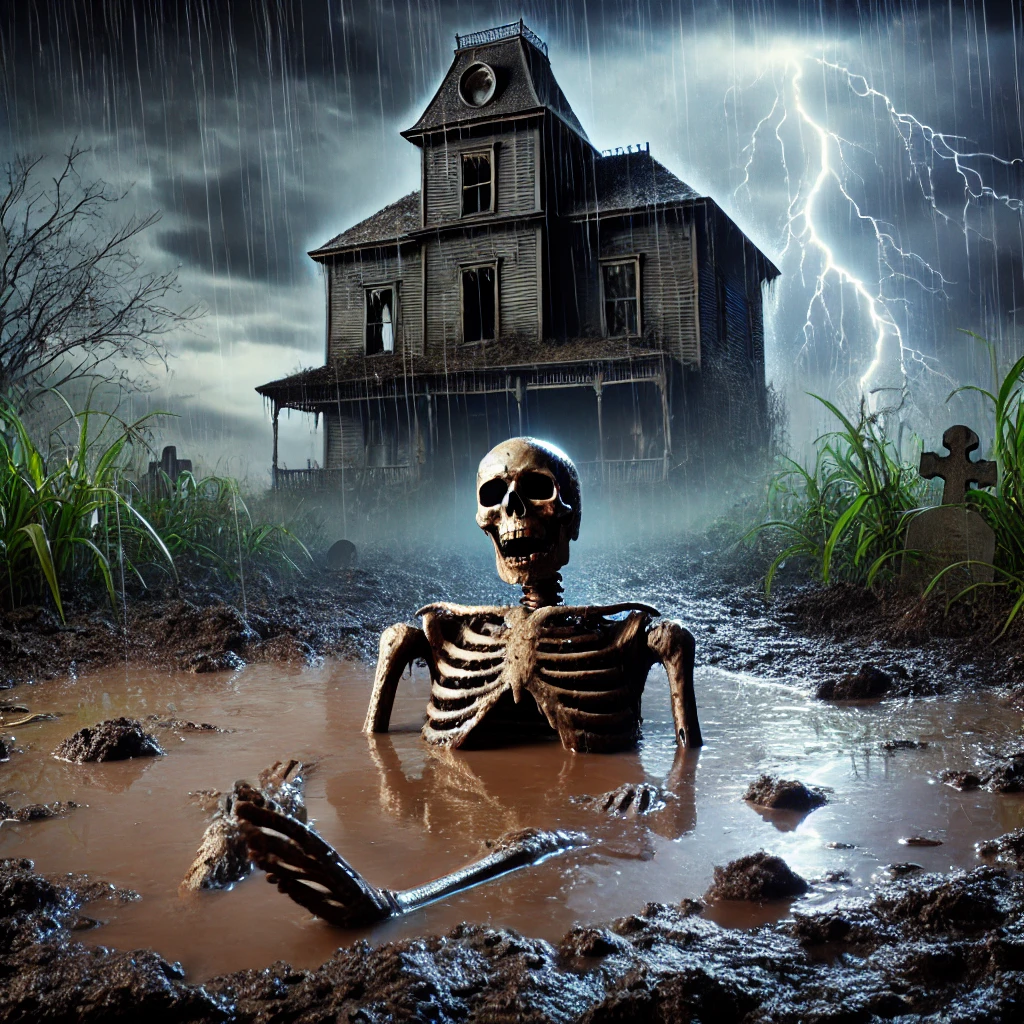The 1982 horror film “Poltergeist,” directed by Tobe Hooper and produced by Steven Spielberg, is renowned for its eerie storyline and supernatural thrills. However, behind the scenes, the movie gained infamy for a disturbing production choice: the use of real human skeletons. This decision has sparked controversy and horror both on and off the screen, contributing to the movie’s enduring legacy and the so-called “Poltergeist curse.”
The Plot of “Poltergeist”
“Poltergeist” tells the story of the Freeling family, whose idyllic suburban life is shattered by malevolent spirits haunting their home. The haunting escalates when their young daughter, Carol Anne, is abducted by these spirits, leading the family to seek help from paranormal investigators and a spiritual medium. The film’s combination of supernatural horror and family drama struck a chord with audiences, making it a critical and commercial success.
The Revelation of Real Skeletons
The controversy surrounding “Poltergeist” centers on the climactic scene where JoBeth Williams’ character, Diane Freeling, falls into a swimming pool filled with skeletons. It was later revealed that these skeletons were not props but real human remains. This revelation shocked many and raised ethical and moral questions about the lengths to which filmmakers should go to achieve realism in their productions.
The Decision to Use Real Skeletons
The decision to use real skeletons was primarily driven by practical and economic reasons. At the time, acquiring and using real skeletons was reportedly cheaper than creating realistic plastic ones. The film’s special effects makeup artist, Craig Reardon, confirmed this in interviews, explaining that real skeletons were commonly used in movies due to their lower cost and higher availability.
Ethical Implications
The use of real human remains in “Poltergeist” has sparked considerable debate about the ethical boundaries of filmmaking. Critics argue that this decision disrespected the deceased and their families, reducing human remains to mere props for entertainment. The lack of transparency and consent regarding the use of these skeletons further exacerbates the ethical concerns. The revelation has led to calls for stricter regulations and ethical guidelines in the film industry to ensure that such practices are not repeated.
The “Poltergeist Curse”
The use of real skeletons has also been linked to the so-called “Poltergeist curse.” This alleged curse refers to the series of unfortunate and tragic events that befell several cast members following the film’s release. Most notably, Heather O’Rourke, who played Carol Anne, died at the age of 12 due to medical complications. Dominique Dunne, who played her older sister Dana, was murdered by her ex-boyfriend shortly after the film’s release. These tragedies, along with other misfortunes affecting cast and crew members, have fueled speculation that the film was cursed, possibly due to the use of real human remains.
Legal and Cultural Impact
The controversy surrounding “Poltergeist” has had a lasting impact on the film industry. In the wake of the revelations, there has been increased scrutiny of the practices and ethics of film production. Filmmakers and studios are now more aware of the need for ethical considerations in their work, particularly when it involves the use of human remains or other sensitive materials. Additionally, the “Poltergeist” controversy has become a cautionary tale, reminding filmmakers of the potential consequences of compromising ethical standards for the sake of realism or cost savings.
Modern Perspectives on Realism in Film
Today, advances in technology have made it easier for filmmakers to create realistic effects without resorting to unethical practices. Computer-generated imagery (CGI) and advanced special effects can produce lifelike representations of skeletons and other elements without the need for real human remains. This shift has alleviated many of the ethical concerns that plagued productions like “Poltergeist.” However, the debate about the balance between realism and ethics in filmmaking continues, as new technologies bring their own set of ethical and practical challenges.
The Legacy of “Poltergeist”
Despite the controversy, “Poltergeist” remains a landmark in horror cinema. Its innovative special effects, compelling narrative, and the chilling atmosphere have cemented its place in film history. The ethical questions it raised have also contributed to its legacy, sparking ongoing discussions about the responsibilities of filmmakers and the impact of their choices on both their audiences and the subjects they depict.
Conclusion
The use of real skeletons in the 1982 movie “Poltergeist” is a stark reminder of the ethical complexities inherent in the pursuit of cinematic realism. While the decision was driven by practical considerations, it opened up a Pandora’s box of moral and ethical dilemmas that continue to resonate within the film industry. The resulting “Poltergeist curse” has only added to the film’s mystique and legacy, making it a subject of enduring fascination and debate. As technology continues to evolve, the lessons learned from “Poltergeist” will hopefully guide future filmmakers towards more ethical and respectful practices, ensuring that the pursuit of realism does not come at the cost of human dignity











Leave a Reply